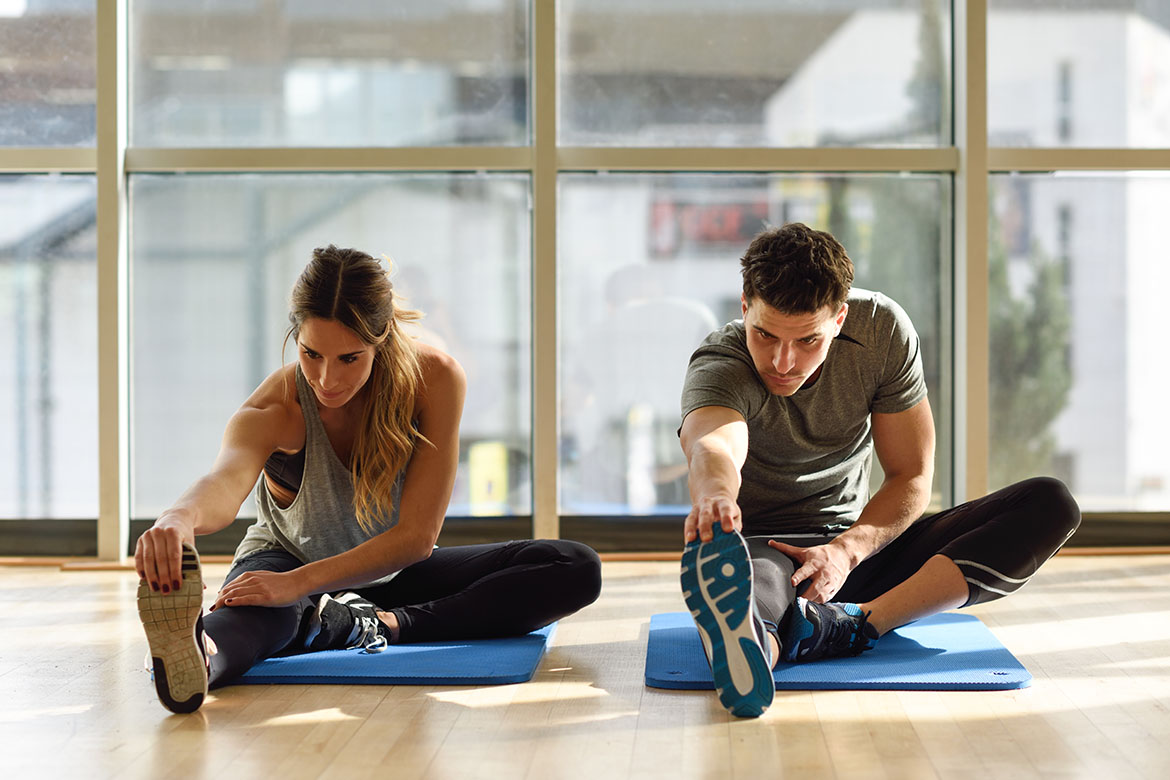Stretching can be a pain, but it’s essential for avoiding injury and maintaining a healthy range of motion—especially if you’re doing severe weight training. Always include some basic stretches in your pre- and post-workout routines, go with your gut, and consult a doctor if something hurts more than “oooh yes, that’s the stuff.”
Stretching is an important part of fitness, but it doesn’t come easy to everyone who exercises. Stretching is important even if you don’t work exercise. To find out which stretches are essential for everyone, we spoke with two of our favourite fitness and mobility gurus.
What are the basic stretches that everyone should try?
Stretching doesn’t have to entail cramming an hour of advanced yoga routines into your day. Here are a few easy moves that anyone may include into their day:
1. Runner’s Stretch
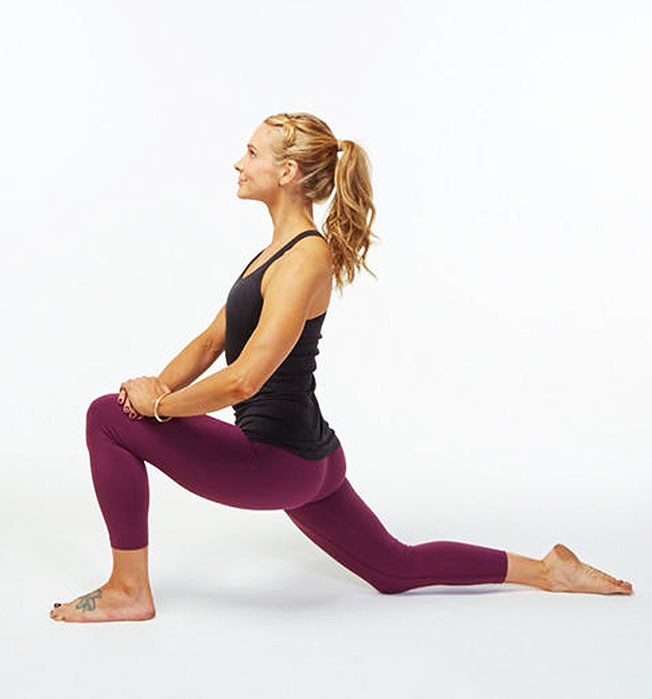
This stretch is very beneficial to the hamstrings and hip flexors in the lower body. Low back pain is frequently caused by tight hamstrings. They could be exacerbated in persons who sit for long periods of time.
Step:
- Standing with your feet hip-width apart is a good idea.
- Step back with your left leg and rest both hands on the ground, shoulder-width apart, on either side of your right foot.
- Lower your hips until the front of your left hip and leg are stretched. Hold the position for 30 seconds.
- Straighten your front leg slowly while keeping your hands on the floor. Don’t worry if you can’t totally straighten your leg. Hold the position for 30 seconds.
- Rep on the opposite side.
2. Forward Fold
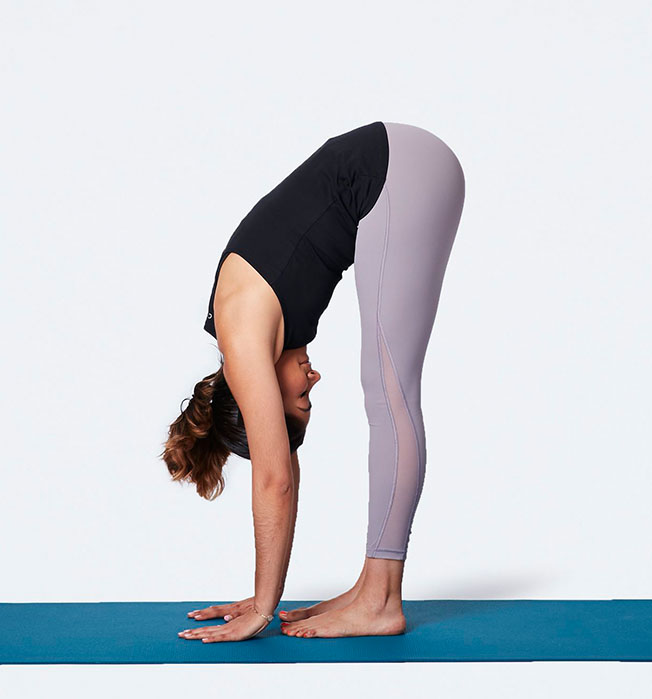
This stretch is a full-body stretch at its finest. It’s perfect for office workers who spend too much time glued to their computers. Legs and hamstrings will be stretched. It’s also a great way to open up your chest and shoulders.
Steps:
- Toes pointed forward, stand with your feet hip-width apart.
- Reach behind you and meet your hands behind your glutes. If possible, interlace your fingers.
- Bend at the waist, sliding your hips backward and putting your weight in your heels until you feel a stretch down the back of your legs while maintaining a flat back.
- Allow gravity to pull your arms above your head as you bend forward, maintaining your arms straight. Only stretch your shoulders as far as they will allow. For 30 seconds, stay in this position.
- Repeat.
3. Bound Angle
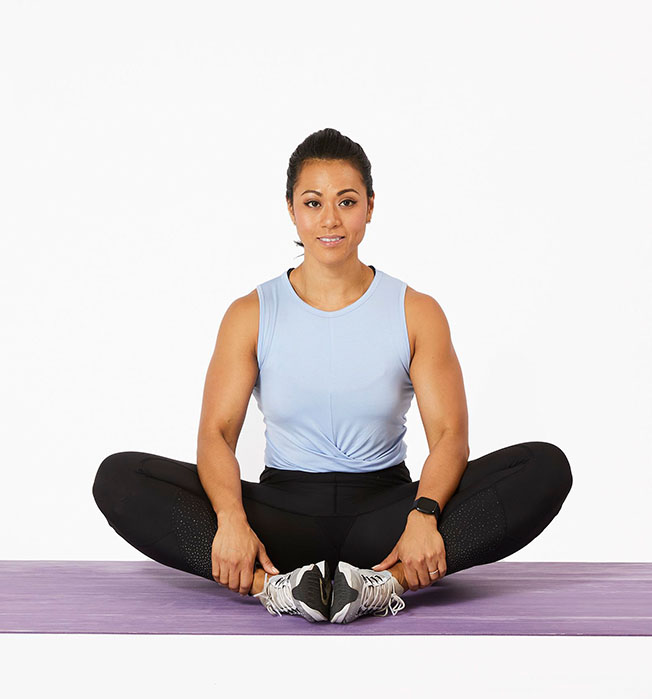
Both men and women benefit from this hip-opening stretch. It aids in the reduction of tension in the hips and thigh muscles on the inside.
Steps:
- Adductors, hip flexors, and glutes were the muscles that were worked.
- Sit with your back straight on the floor. Keep your feet’s soles in contact.
- Lengthen your spine by placing your hands on your feet. Shift your weight forward off your tailbone, as though a thread is tugging your head to the ceiling.
- Lean forward with a flat back and bring your head toward your feet, using your arms to assist.
- Only go as far as you feel safe. Hold position for 30 seconds.
4. Seated Back Twist
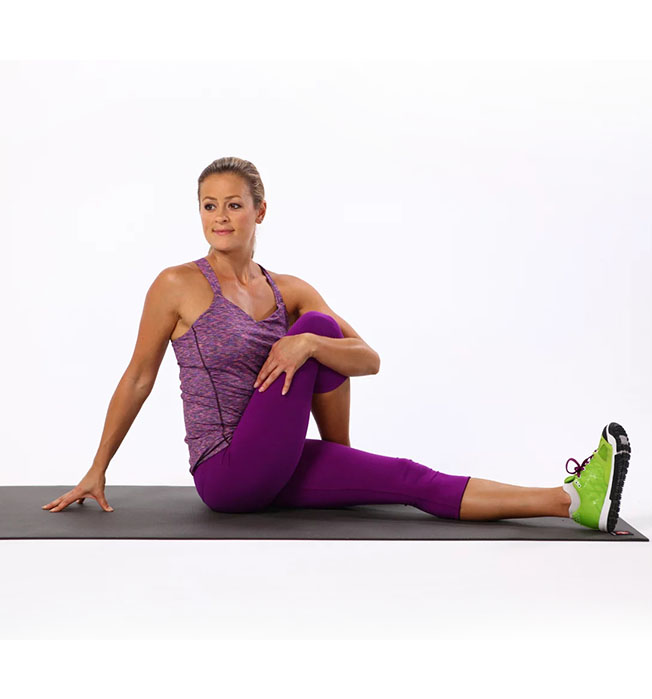
Spinal twists are an excellent release exercise that can help with back discomfort and mobility. If you have any disc or spinal problems that could be worse by twisting, this exercise should be avoided.
Steps:
- Sit cross-legged on the floor with your left leg on top.
- Cross your left leg over your right leg even farther, putting your foot on the ground by your right knee and pointing your left knee upward.
- To gain leverage, gently shift your shoulders to the left while pressing against your left leg.
- Only go as far as you feel safe. Maintain this position for 30 seconds.
- Rep on the opposite side.
5. Chest Stretch in Door
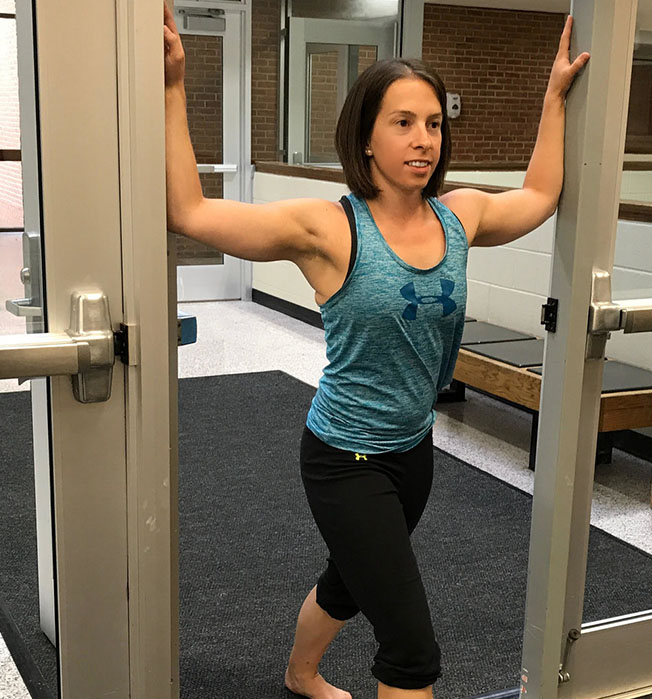
People with bad posture frequently experience tightness in the chest and shoulders. This can lead to more serious issues later in life. Daily chest-opening stretches can aid in the prevention of tightness while also promoting healthy posture and breathing.
Steps:
- Place yourself in the centre of an open door.
- If possible, place your forearms on each side of the doorframe. Do one arm at a time if the doorway is too broad.
- Lean into the doorway gently until you feel a stretch in the front of your chest and shoulders.
- Only go as far as you feel safe. Maintain this position for 30 seconds.
